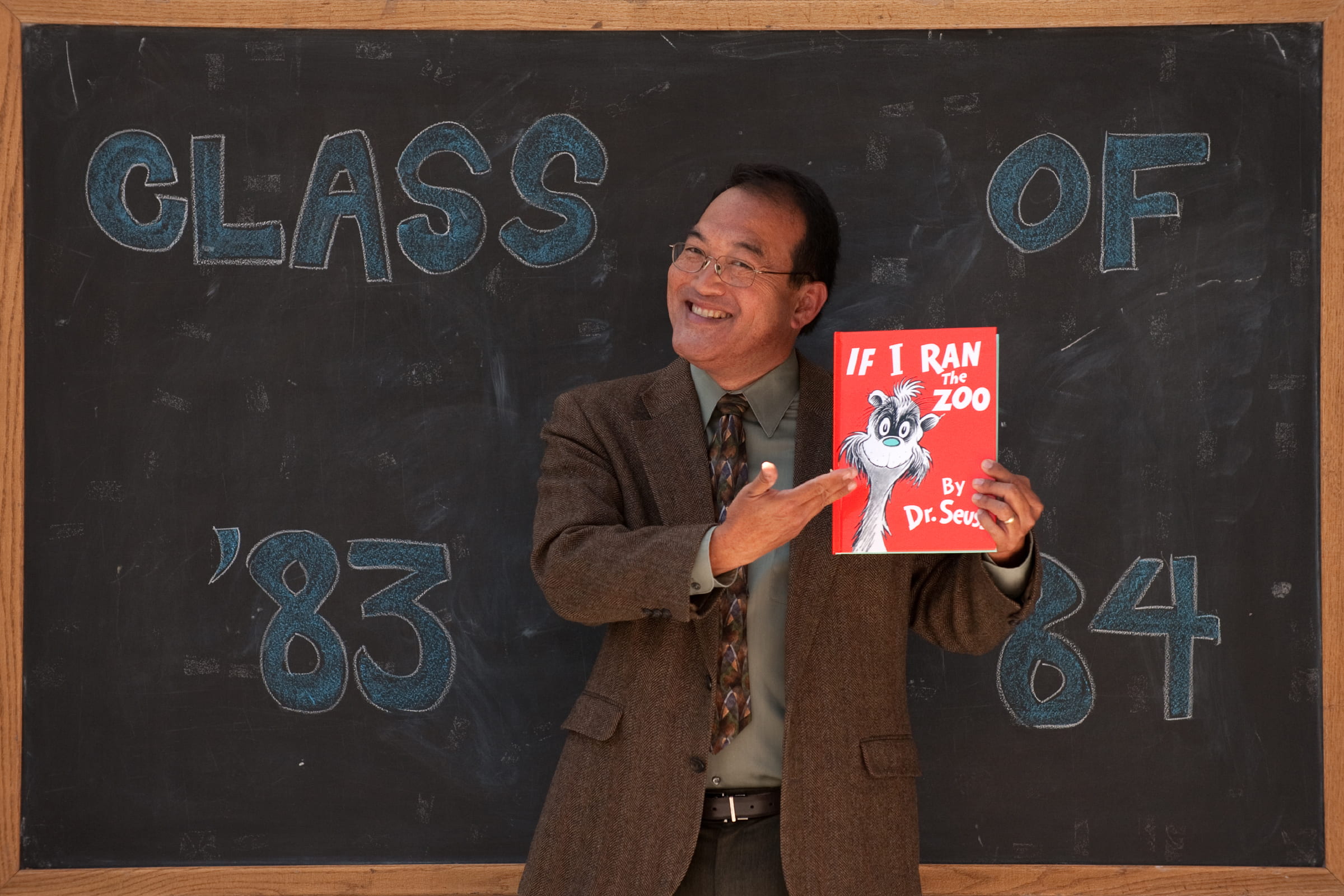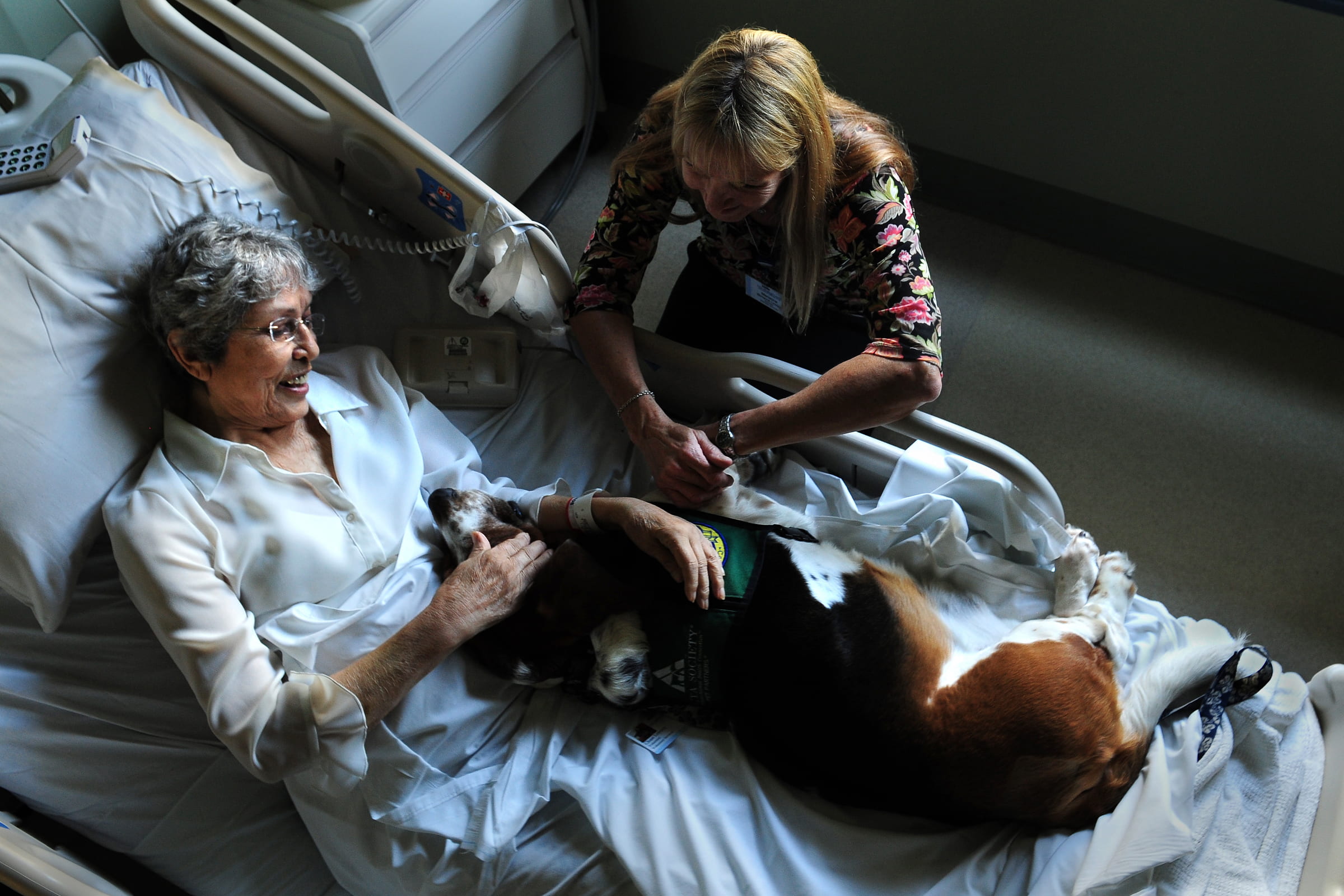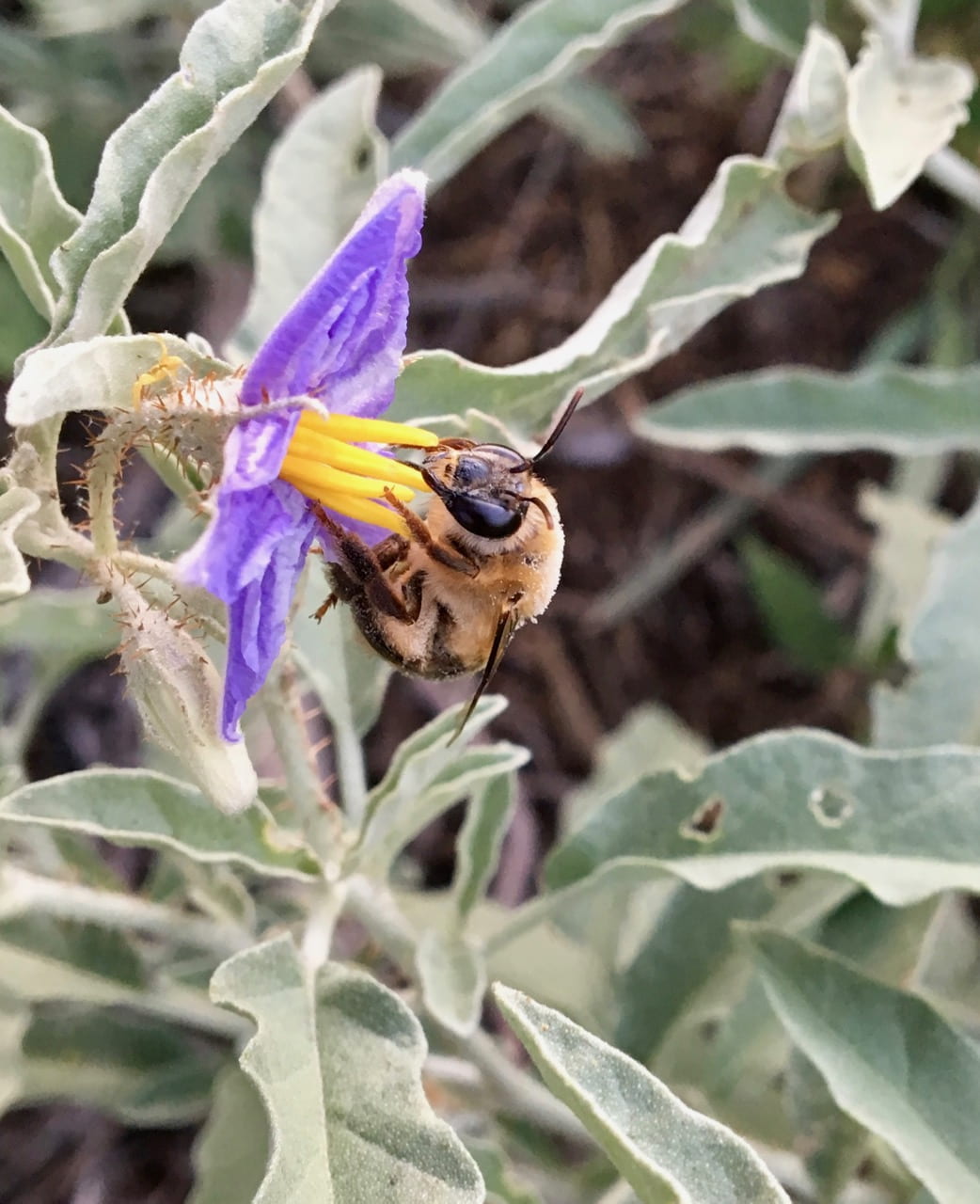If he ran the zoo? (Actually, he does)

If I Ran the Zoo, the popular Dr. Seuss tale, would be much different if written by UC Irvine alumnus Kent Yamaguchi ’83 and ’84. His version might call for filling the zoo with anteaters.
Since becoming director of the Santa Ana Zoo in January 2009, Yamaguchi has overseen the addition of Orange County’s first pair of giant anteaters — including a male named Peter, after his alma mater’s celebrity mascot. He’s also celebrated the arrival of Peter’s progeny, a female born in April.
“Anteaters are so fascinating. You just have to love them,” says Yamaguchi, looking like a doting father as he watches the baby go for a ride on her mother’s back in the zoo’s anteater exhibit. “I’m proud to have UCI’s mascot here.”
Being an anteater keeper is just one of many things Yamaguchi likes about running the zoo, a 20-acre, stroller-friendly oasis best known for its extensive monkey collection.
“The smaller the zoo, the more hats you get to wear. That’s why I like this job; it’s never the same,” he says. “Every day I walk through the zoo to see what’s going on. I need to stay connected. You’ll notice my shoes aren’t polished or shined. It can get a bit dirty.”
Passing a monkey enclosure on a May morning, he’s greeted by an especially feisty crested capuchin who screams at him in recognition — a sign the primate considers him a pal.
Yamaguchi can’t get too close to many of the zoo’s inhabitants: He’s allergic to fur and feathers.
“I should own stock in Claritin,” he jokes. “You see a lot of zoo directors holding furry animals. I’m the one holding the reptiles.”
Back at Tierra de las Pampas, the anteaters’ grassland habitat, he gives an impromptu talk on Myrmecophaga tridactyla behavior to zoo visitors who have come to see the baby.
“Can I borrow a couple of those?” a woman asks him. “I have a lot of ants in my house.”
“You wouldn’t want them — they tear through wood to get at the ants,” Yamaguchi replies. “They have 3-inch claws. Even the baby has 1-inch claws.”
Weighing just 4 pounds at birth, the female is one of 10 anteaters born in U.S. zoos so far in 2011. (Giant anteaters are not endangered; about 100 live in captivity nationwide.)
She’ll spend most of her first year clinging to her mother’s back, looking much like the cute, stuffed UCI anteaters that Yamaguchi displays in his office. Then she’ll be transferred to another zoo for breeding.
“Ours is special because she brings new blood into the gene pool,” he says. “Several zoos are interested in her.”
Naming rights to the baby are available for a $5,000 gift to the zoo, and Yamaguchi hopes UCI supporters will be first to ante up. A USC fan named Peter’s mate Heesoo (Susan, in Korean) of Troy after the Trojan mascot — much to the chagrin of human Anteaters. “There was a certain rally cry at UCI: ‘Never again!'” Yamaguchi says. “We don’t want our baby to be named Tuffy the Titan. She’s like our grandchild.”
Peter and Heesoo didn’t look like the mating kind when they first arrived at the zoo in April 2010. They squabbled and clawed at each other with their bearlike paws.
“She was aggressive toward him,” Yamaguchi recalls. “But then Peter started standing up for himself. Eventually, he’d come to her, poke her in the side with his nose, and she’d roll over on her side. They’d get together for some afternoon delight.”
“Peter likes to do three things — two of which are to eat and sleep,” he adds.
Yamaguchi, who earned bachelor’s degrees from UCI in biology and applied ecology, never expected to work with anteaters or other animals.
“I’ve always been more interested in plants. My grandfathers were Japanese gardeners,” he says. “I studied plants at UCI, figuring I’d work in urban planning or study insects that eat other insects. To me, animals were just the things that ate the plants.”
Growing up in Tustin, he began coming to the Santa Ana Zoo at age 4. “Because of my allergies, I couldn’t have pets, so my parents brought me here,” Yamaguchi says.
His first job at the zoo was as a summer camp instructor in 1987. Yamaguchi loves the teaching part of his job. He was education curator for 15 years, then became secretary to the zoo director before assuming the top post.
In addition to his administrative duties, he makes sure the zoo fulfills an unusual requirement: It must keep at least 50 monkeys on the premises at all times, as stipulated by Joseph Edward Prentice, a local citrus grower, when he donated the site to the city of Santa Ana. “Monkeys make the best pets in the world,” Prentice would say. He used to let them roam free in his mansion on E. First Street.
His first week as director, Yamaguchi faced a public relations crisis when a newspaper reporter pointed out that the zoo was down to 48 monkeys. Luckily, one of them soon delivered twins. The zoo now has a troop of 60 – thanks, in part, to the birth this spring of three golden lion tamarins, an endangered species.
Yamaguchi wouldn’t mind more anteaters as well. One of his prized mementos is the top of the shipping crate used to transport Peter from Guyana.
“It’s addressed to me,” he says. “I was going to throw it out, but how often do you get a huge wooden postcard with the words ‘One male giant anteater’?”
For Yamaguchi, at least, not often enough.
Originally published in ZotZine Vol. 3, Iss. 10


